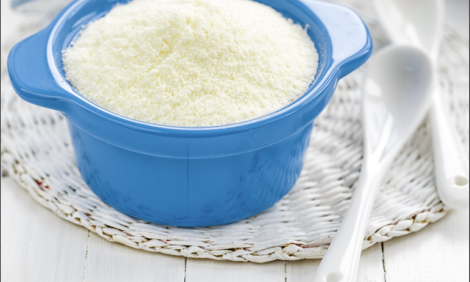



Phosphorus nutrition for transition cows
There is no justification for including phosphorus in a mineral mix for dry cow dietsEditor's note: The following is from a presentation by Walter Grünberg, DVM, PhD, Justus-Liebig University, Giessen, German, during the 2023 Tri-State Dairy Nutrition Conference.
Current estimates of daily phosphorus (P) requirements for cattle are generally considered to be safe for the use in high producing dairy cows and are even thought to provide a certain safety margin, being based on rather conservative estimates of P absorption rates.
Notwithstanding, the adequate dietary P content in rations fed to transition cows remains an issue of controversy. Historically, it was common practice to feed transition cows well in excess of requirements. The main rationale for oversupplying dry cows with P was to mitigate post-parturient hypophosphatemia, while in other instances, high P in dry cow rations was advocated to contain the risk of milk fever or fertility problems in early lactation.
However, feeding more P than current recommendations in dry cows has been unequivocally identified as being counterproductive and more harmful than helpful to a smooth transition process.
Dry cow nutrition
Estimating the P requirements of dry cows presents a variety of challenges. The main difficulty arises from the lack of a suitable parameter to identify dry cows in negative P balance. The limited duration of the dry period, the impossibility to include productive or reproductive parameters, and the lack of unambiguous clinical signs attributable to P deprivation, all contribute to the difficulty of determining at what dietary P level dry cows enter a negative P balance.
Current recommendations for dietary P supply for dry cows’ range between 0.20 to 0.25% in dry matter (DM) in different countries (National Academies of Sciences and Medicine, 2021). Dry cow rations with 0.30 to 0.40% P and even higher are widely used in the field and can be considered as oversupply.
Formulating rations with a P content of 0.25% or below using standard feed ingredients can be a challenge. This underscores the unlikelihood of P deficiency occurring in dry cows when using standard diet ingredients if these are not produced on heavily P deficient soils.
There is no justification for including P in a mineral mix for dry cow diets.
Feeding dry cow diets with a P content of 0.36% in DM or above was associated with lower blood calcium concentrations and higher incidences of hypocalcemia around calving when compared to cows fed diets with 0.22% P in DM.
Feeding cows well short of 0.20% P in DM for the last four weeks of the dry period was associated with significantly increased blood calcium concentrations around calving and significantly decreased the incidence of clinical and subclinical hypocalcemia, compared to dry cows on adequate dietary P supply.
A major problem with the use of dry cow diets with low P content is the difficulty to formulate rations that are otherwise balanced with a P content sufficiently low enough to trigger counter regulation (0.16% P in DM or below). Feed additives capable of binding dietary P, as is the case for zeolites, may facilitate the induction of a negative P balance when included in the dry cow ration.
The current evidence indicates that feeding P in excess of current recommendations during the dry period is to be avoided whenever possible.
Fresh cow nutrition
The fresh cow period is the phase of the lactation cycle with the highest risk for P deprivation becoming clinically apparent in dairy cows. Studies investigating the effect of P deprivation in cattle consistently reported the most obvious clinical signs in the first weeks of lactation. Studies investigating effects of P deprivation in transition cows report considerable negative impact on health and productivity when P deprivation was extended into early lactation.
The most prominent observations were marked feed intake depression, decreased productivity, and increased disease incidence.
In contrast, when P deprivation was limited to the dry period and adequate amounts of P were provided from the moment of calving, only the beneficial effect on the calcium balance without any side effects was observed.
From the available data, it is not clear if the deleterious effects of P deprivation in early lactation are the result of prolonged P deprivation during late gestation and early lactation, or if depriving P only during early lactation would have been sufficient to induce feed intake depression and increased disease incidence.
The precise mechanisms through which P deprivation causes havoc in early lactation remains obscure.
Phosphorus deprivation in early lactation is generally a result of high milk yield in combination of diets with inadequately low P content, insufficient access to feed, or feed intake depression as may occur in sick animals.
Every effort should be made to avoid P deprivation in this critical period of lactation.
Reference
National Academies of Sciences, Engineering and Medicine. 2021. Nutrient requirements of dairy cattle: Eighth Revised Edition. The National Academies Press, Washington, DC.



